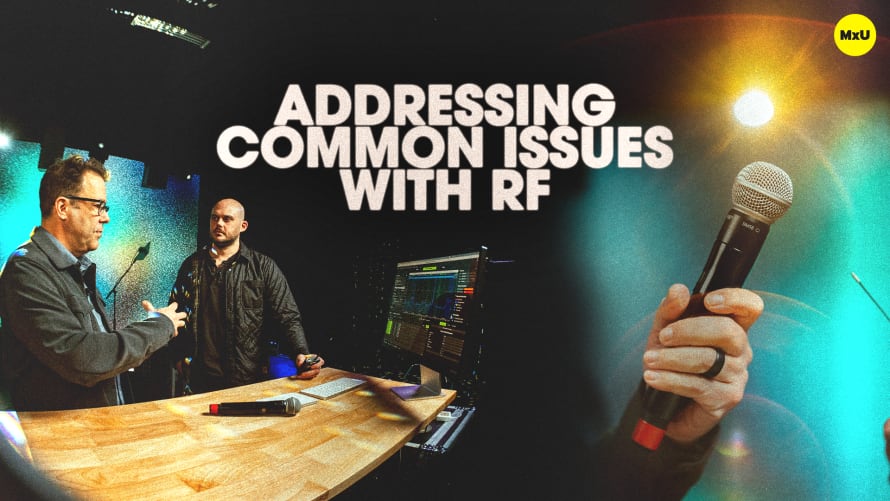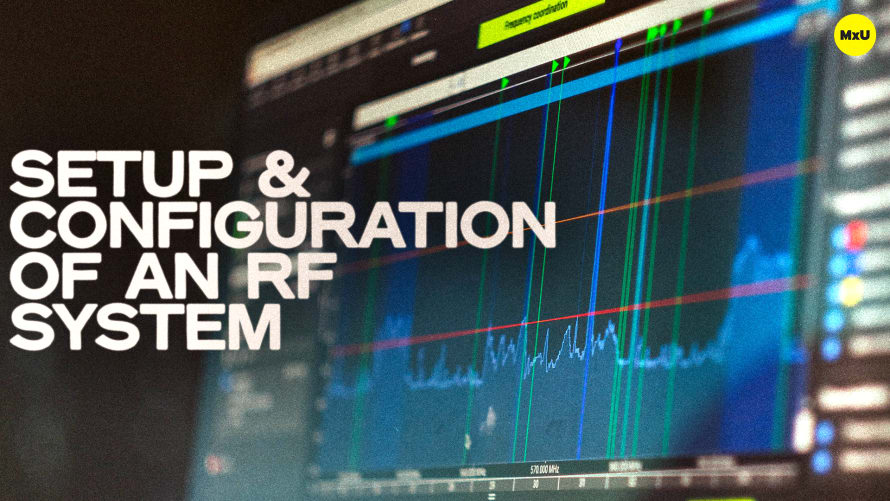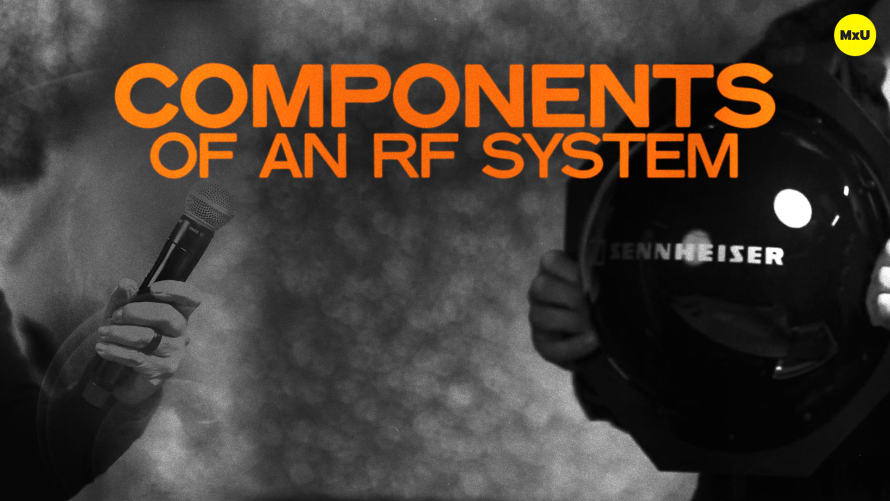Addressing Common Issues with RF


Continue watching
Sign up to continue watching Addressing Common Issues with RF
Pricing
Starting at $19.95 /mo
More in MxU
RF can be tricky by nature if you’re not completely sure of what you’re doing. The most common issues include dropout and interference stemming from improper antenna placement or frequency mismatches. The goal should be to create a stable RF environment that you can rely on week to week.
Antenna Placement
Improper antenna placement is by far one of the most common issues with RF. Placing your antennas correctly maximizes RF reception and transmission. Space your antennas well, at least 6 feet apart so they cover a wide range of angles. Antennas should be angled at 45 or 90 degrees to each other. This improves the ability to capture signal as the talent moves around the stage.
Distance and Obstructions
Line of sight is absolutely incredibly important for making sure you eliminate as many issues as possible. Remove any physical barriers between the antenna and the talent on stage. This includes LED walls, which can output their own RF frequencies as well. Setting direction and gain are important when using directional antennas for stronger reception over longer distances. Gain can help boost signal reception but it also introduces the issue of raising the noise floor. Don’t over boost the gain on your antennas as it will begin to dirty your signal.
Best Practices
Pick clean frequencies to avoid interference, especially in crowded electronic environments. Use free software tools, like Wireless Workbench, to scan for frequencies. These tools then allow you to coordinate the correct frequencies to use in your environment. Manage the noise floor when boosting gain and during frequency selection to ensure a clean signal. Communication and trust between talent and the system is key. Make sure talent knows how to properly hold the microphone and what to avoid when on stage.









